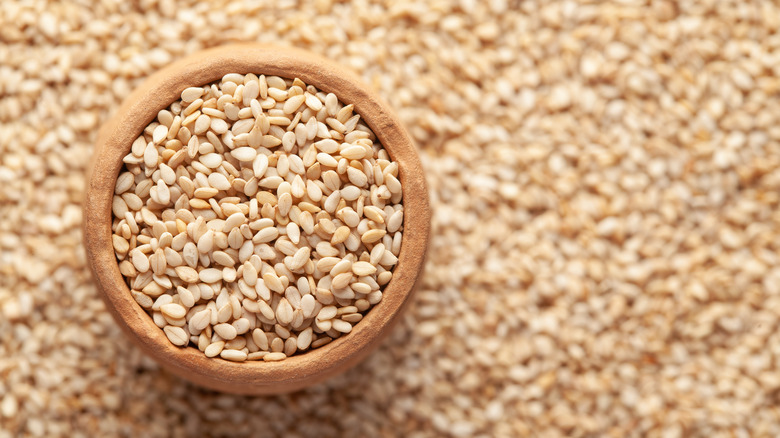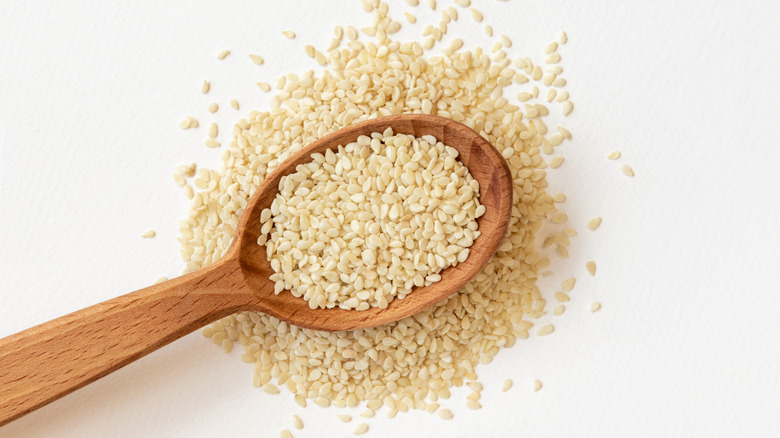Why Sesame Seeds Were Once Deemed As Valuable As Gold
When it comes to versatility, it's hard to beat sesame seeds. One of the oldest domesticated crops in the world, sesame seeds were ground into flour by the ancient Egyptians, burned as oil by the ancient Chinese, and mixed with cumin to make a spread for bread by the ancient Romans, per The Epicentre. Since then, these oily little seeds of the sesame plant seem to have made their way into everything, from hamburger buns to tahini paste to Dr. Pepper-glazed baby back ribs.
Sesame seeds have maintained their popularity over several millennia, an impressive feat in today's world of here-today, gone-tomorrow food trends. The seeds' widespread use — even in home kitchens — is also noteworthy in light of the fact that they're a pricey cooking item, with the desirable white version retailing for up to $11 per pound. But sesame seeds actually used to be way more expensive — at one point in history, they were literally worth their weight in gold.
Sesame seeds were prized in the Middle Ages
Utilized in cooking and in the home for thousands of years, sesame was particularly prized in the Middle Ages, when the spice trade routes linking Asia and the Middle East with other parts of the world continued to expand and helped to spread the tiny kernels even further (via Britannica). According to Fazlani Exports, an Indian exporter of spices, grains, and sesame seeds, the latter were worth as much as gold during those centuries.
Today, sesame seeds are found within a huge range of world cuisines. You find them on New York bagels; pressed into the fragrant toasted oil that's used to anoint Chinese stir-fries and whisked into Japanese salad dressings; ground into the tahini paste that lends its rich flavor and texture to hummus and baba ghanoush; and mixed into countless versions of granola. Indeed, sesame seeds may no longer be worth their weight in gold, but they continue to pull their weight in the kitchen.

